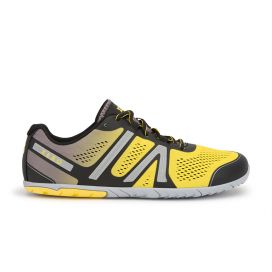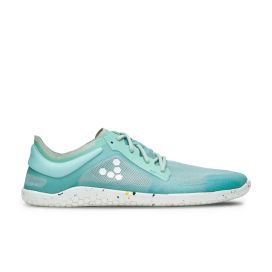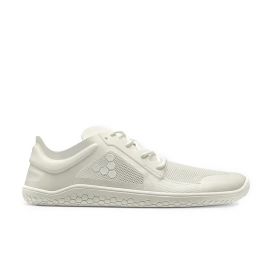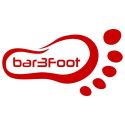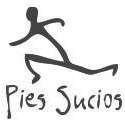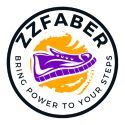No products
Prices are Management included

Do your knees hurt? leaves the shoes cushioned
Do you wear knee pads for walking or running?
Do your knees hurt?
If you answered yes to any of these questions, I'm going to tell you why walking or running with cushioned shoes is bad for your knees.
So bad, that if you keep doing it you will end up in the operating room and without meniscus.
But first, look at what happened to my cousin when he started running.
Pesca (everyone calls him that because my uncles had a fishmonger's shop) has always been a good runner.
In his childhood he played football and was very fast. He had a great stride.
He played on the wing and ran so fast that I used to say he looked like a greyhound.
Then he stopped playing football and stopped running.
There is a moment, between childhood and maturity, when you stop playing sport. Let's say that we become interested in other things.
It happened to him and when he returned to running continuously he was already close to 40.
At that time I had been running in minimalist shoes for several years and when I saw him running all my alarm bells went on.
My cousin still had his stride, but now he was no longer running on the football field, but in cushioned shoes on asphalt and roads.
And when he ran, his foot touched the ground far away from the centre of his body.
With his knees straight, locked, as if his leg were a stick.
One step after another..., like this a thousand times.
And instead of cushioning the impact, he received it.
So, the pains started to appear and the knees were getting crushed.
One day drinking a coffee I made him see it.
I explained to him how my knees were suffering and recommend him to read the 'Guide to Learning to Run Naturally', where we talk about the importance of the foot and a less damaging running technique.
But my cousin is more of make than read, so he kept running.
Besides, at that time I was like the 'madman' of the town, who could run barefoot or in flip-flops.
And surely Pesca thought:
"My cousin is crazy. He goes around running barefoot or with those minimalist shoes with hardly any sole or cushioning".
And of course, since Nike is a lot of Nike, and the people's opinion is a lot of opinion, he continued running in his brand new cushioned shoes.
And his knees continued to be crushed until he ended up in the operating room and without a part of the meniscus.
Now recovered from the operation, we spoke again.
He was totally determined to change the way he ran.
He started slowly with minimalist running shoes with thin soles (about 5 mm).
Walking and running.
Running and walking.
He also did exercises to help his muscles adapt and to wake up his feet, and above all, he put a lot of effort into improving his running.
Several years have passed since then and now Pesca is running like hell.
When you see him running he is smiling. He has gone from pain and fear to enjoy running.
And what he likes most is to participate in popular races with his friends.
In the way he is going, he will retire running.
What I was getting at.
Do you know why you shouldn't wear traditional or cushioned running shoes if your knee hurts?
Because your feet have more than 30,000 nerve endings and if you cover them up with a thick, cushioned sole, you cancel out the collection of tactile signals emitted by the ground.
This confuses your feet and instead of interpreting that you're walking on hard asphalt, they think you're on a soft, cushioned surface.
And the result is that your footsteps are more damaging.
In addition, the cushioning of the shoes does not allow the impact moderation mechanisms to come into play, as most runners in these shoes touch the ground with their heel and well in front of the centre of their body.
In this position the knee is straight or slightly bent, so instead of cushioning the impact, it receives it. Just like my cousin.
Finally, cushioned shoes are usually narrow, have arch support, heel reinforcements, a pronation control system, a stiff sole and a difference in height between the heel and forefoot (drop or heel).
And all this make difficult the mobility of your foot, affecting not only your knee, but also your hip and back.
Good. In view of this, you have two options.
Stick with the cushioned shoes you see in magazines, on TV and even in your soup, and have 3.41 times the risk of injury*.
Or do like Pesca and switch to a shoe that:
- Helps you strengthen your feet,
- Doesn't hinder proper running technique, and
- Allows you to use your body's intelligent cushioning. The leg metre made up of your foot, knee, hip and the muscles and tendons.
So your running will be not hard, it will be enjoyable.
So when you travel to a new city or mountain, you can get to know it by running.
And so that when you are 60 years old, you can continue to participate in popular races together with your club mates.
Two of these shoes are:
Vivobarefoot Primus Lite III
Xero HFS
Both with thin soles to protect your knees and, of course, 100% minigrips.
*Relationships Among Self-reported Shoe Type, Footstrike Pattern, and Injure incidence. Goss DL, Gross MT. US Army Med Dep J. 2012, Oct-Dec: 25-30.
Dejar un ComentarioDejar una respuesta
Blog categories
- Running Technique
- Shoes Review
- Scientific studies
- Nike and minimalist shoes
- Morton neuroma
- Bunions
- Podiatrists' opinion on...
- Claw toes, crowded toes,...
- Flat feet
- Runner's injuries, runner's...
- Sprained feet, ankle sprains
- Footwear for wide feet or...
- Heel and back pain
- Children's feet and...
- Circulation and bone...
- Knee pain, osteoarthritis,...
- Plantar fasciitis
Últimos Comentarios
Fernando Capellán
That Vivobarefoot lawsuit… and what happened nextLorena Cortés
This is what Nike did to Nadal's footFernando Capellán
They call it ugly... but everyone will...Antonio Caballo
The finger wristband: when fashion squeezes...

